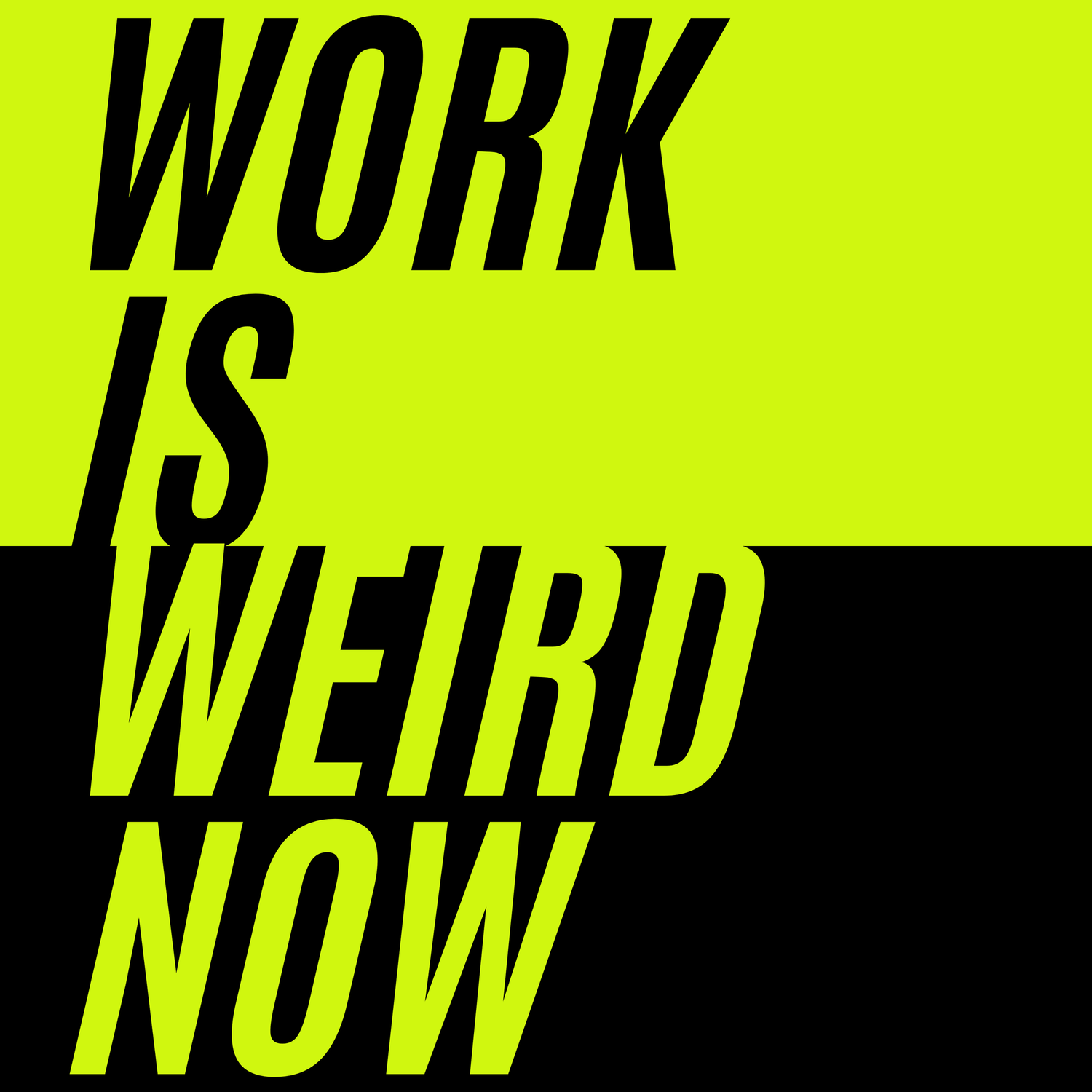how are cities changing to suit today’s workers?
A conversation with Kasia Maynard, Head of Research and Editorial at WorkTech Academy
What happens when cities evolve faster than our workplaces? Or when the office stops being where we connect, and the high street is no longer where we shop? This week on Work Is Weird Now, we sat down with Kasia Maynard, a leading workplace researcher and editor at WorkTech Academy, to explore how work, place, and people are being reshaped in real time.
Cities Are Not Dead—They're Evolving
Despite early pandemic headlines predicting the death of the city, Kasia sees something different: cities are shifting, not disappearing. While business districts like Wall Street and Canary Wharf have gone quiet, areas like London’s City or New York’s Hudson Yards are buzzing again. Why?
“People expect more from cities now—better amenities, community, and a reason to leave the house,” Kasia said. “Work is no longer the sole anchor.”
Cities, she argues, need to become not just places of commerce, but places of life.
Six Emerging Workplace Models
From a global trends report, Kasia and her team identified six workplace strategies that have emerged post-pandemic:
Choice Champions – pushing for flexibility and autonomy.
Resolute Returners – think: five days a week, no compromise.
Wellbeing Watchers – finally taking employee health seriously.
Shape-Shifters – rethinking real estate footprints.
Digital Transformers – metaverse hype has fizzled, AI is in.
Data Drivers – using analytics to predict and personalise work experiences.
But the real surprise? Hybrid work is harder than it looks.
“There’s no blueprint for hybrid,” she explains. “And without one, many companies are quietly returning to more traditional office rhythms.”
Middle Managers Are Struggling
Gallup’s 2025 report shows a dip in employee engagement for the first time since COVID—driven by one group: middle managers.
“They’re caught between top-down mandates to bring people back in and bottom-up pressure from employees who value flexibility,” said Kasia. “And no one’s taught them how to lead in this new world.”
It’s a call for a radical rethink in leadership, blending clarity, empathy, and creativity.
AI and Urban Design: Friends, Not Foes
Kasia has a refreshingly optimistic take on AI. She’s not just hopeful. She says it’s already reshaping the cities we live in.
She cited a project using AI to collect anonymised data from reviews and social media, creating personas to inform how public space should be designed.
“It’s like creating a digital twin of a city,” she said. “You can simulate how different types of people interact with the space before spending a penny on construction.”
Could the same approach help solve the hybrid work conundrum? Possibly. The tools exist, but too often, data sits in silos across HR, real estate, and IT.
Reclaiming Community (Beyond the Office)
If the workplace no longer provides daily connection, where do we gather?
From teenage TikTok dancers in public parks to the slow reinvention of high streets, Kasia believes we’re seeing a new kind of public space emerge: one where digital and physical lives blur.
She imagines a future where community is built around “experience, not function,” and where AI helps cities adapt in real time.
“We need more spaces where people just... belong,” she said. “And we need planning, investment, and culture to catch up.”
What’s Next?
Kasia is currently knee-deep in a research project on legal workplaces—“a fascinating and scary place,” she jokes—and dreaming of doing more work around shared language in future-of-work conversations.
“We’re all using words like ‘smart buildings’ and ‘hybrid,’ but no one means quite the same thing.”
